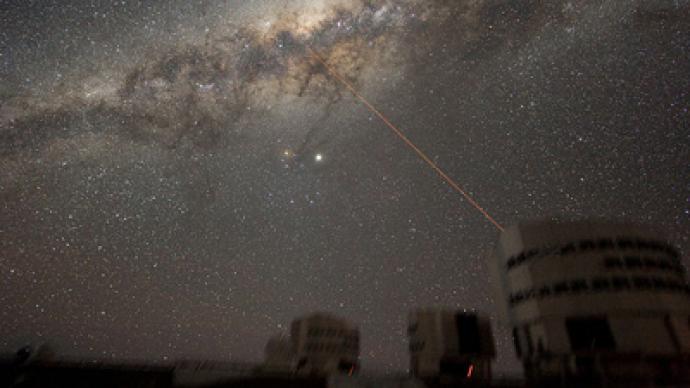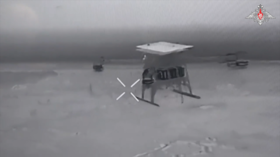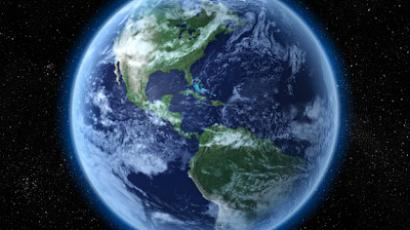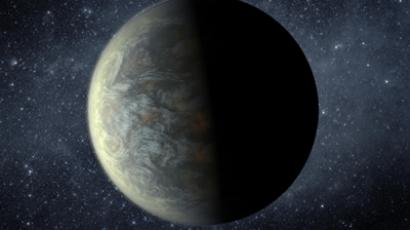ET has more than 4 billion potential homes in Earth's 'back yard'

Extra-terrestrial life may be just around the corner from Earth, in astronomical terms, on one of possibly habitable 4.5 billion planets in the Milky Way, according to a new research.
Stars called red dwarfs may support planets on which life is possible. Six percent of red dwarfs in the galaxy have Earth-sized planets, which could be habitable, astronomers at the Harvard-Smithsonian Center for Astrophysics have estimated.Red dwarf are the most common stars in the Milky Way, which means that the closest earth like planet could be just 13 light years away, not far in space terms. Red dwarfs are smaller, cooler and fainter than our Sun and are not visible from Earth to the naked eye.But despite their relative dimness, they make up three out of every four stars in our galaxy, a total of 75 billion. “We thought we would have to search vast distances to find an earth-like planet. Now we realize another Earth is probably in our own backyard, waiting to be spotted,” said Courtney Dressing, an astronomer who presented the finding at a press conference Wednesday at the Harvard-Smithsonian Center in Massachusetts.Dressing identified 95 planetary candidates orbiting red dwarf stars. According to the scientists’ estimates, 60 percent of red dwarfs could have planets orbiting them that could be smaller than Neptune. Most were not quite the right temperature or size to be truly Earth-like, although three of the planets were warm and were approximately Earth-sized. Statistically therefore six percent of red dwarfs could have an Earth-like planet, scientists add.“We don’t know for sure if life could exist on a planet orbiting a red dwarf, but the findings pique my curiosity and leave me wondering if the cosmic cradles of life are more diverse than we humans have imagined,” said Natalie Batalha, Kelper mission scientist at NASA’s Ames Research Center. Locating these Earth-like planets would require a large network of ground based telescopes or a small space telescope, while follow up studies by the Giant Magellan Telescope and the James Webb Space Telescope could tell us whether any of the planets had an atmosphere, the researchers said.Red dwarf stars have a much longer life than Sun-like stars, meaning that life on a red dwarf orbiting planet might be much older than life on Earth. “We might find an earth that’s 10 billion years old,” said David Charbonneau, co-author of the research. Such a world would be different from our own. Because the planets orbit much closer to their stars, they may not have tides. But this wouldn’t necessarily prohibit life since they may also have a dense atmosphere or a deep ocean which could transport heat around the planet, the scientists said.While young red dwarf stars emit flares of ultraviolet light, an atmosphere would protect life on the planet and help it evolve, the researchers claimed. “You don’t need an Earth clone to have life,” said Dressing. The habitability of a planet is worked out by its distance from the star that it is orbiting and therefore whether it would have liquid water and a surface temperature which could sustain life. Liquid water is considered a major precondition to life. The distance from a star where life is theoretically possible is known to astronomers as the ‘habitable zone’. The astronomers used publically available data from NASA’s Kelper space telescope. Kelper is the first NASA mission capable of finding planets in or near the habitable zone. This is not the first time that astronomers have found evidence that life may exist on planets orbiting red dwarfs. In March last year a French led team, from the European Southern Observatory in Chile, found out that 40% of red dwarf stars are orbited by planets 10 times bigger than Earth which are the correct distance away to support liquid water. However, the French team gave a slightly contradictory conclusion that stellar eruptions and the emission of flares, which are common on red dwarfs and produce X- rays and ultraviolet radiation, would make life less likely on the orbiting planets. But even if we do find alien life on these planets we won’t be able to pay a visit. The closest suitable red dwarfs are 13 light years away, way beyond our space travelling means, although they’re virtually next-door neighbors by space standards.














